Ironic and transversal: Bourgie by Ferruccio Laviani, the baroque lamp by Kartell
How to make a baroque line contemporary and how to bring an object inspired by ancient taste into everyone’s homes? These must be the questions that one of Italy’s greatest designers, Ferruccio Laviani (Cremona, 1960), asked himself in 2004, just before shaping one of his best-known creations: the Bourgie lamp, designed for Kartell. A design piece that conquered the world of furniture and lighting for its ability to combine classic elegance with contemporary design and modern functionality, offering a versatile and appealing solution for lighting any room.
Bourgie, launched at the Salone del Mobile in Milan in 2004 (this was the fourth lamp produced by Kartell after the suspension of the lighting division’s production between 1981 and 2002: Bourgie was preceded only by Easy, Fl/y and Take, all designed by Laviani), is distinguished by its enveloping shapes reminiscent of the seventeenth century, but reworked in a minimalist way to create an object that is innovative and surprising, and if we want, also ironic and fun: indeed, it should not be forgotten that the name given to the lamp is an abbreviated version of the French noun bourgeoisie, “bourgeoisie,” suggesting to those who buy it the desecrating interpretation of the idea of luxury embodied by this object. In essence, Laviani has worked on lines that suggested luxury and elegance in the past and were therefore symbols of prohibitively expensive and inaccessible products for the vast majority of people, and reinterpreted them in a modern and appealing version, using innovative materials and a unique design. The shape of the lamp, with its combination of curved lines and sharp angles, recalls the silhouette of candelabra lamps of yesteryear, but with a more sophisticated and contemporary aesthetic. Made of polycarbonate, the “classic” version (because, despite its few years of life, it can be said that Bourgie has become something of a classic of Italian design) is the transparent one, but Laviani’s lamp is available in a wide range of colors, from classic tones of black and white to bolder ones such as red and orange, passing through purple and gold, making it suitable for any style of decor.
Bourgie ’s versatility is another key to its success. Indeed, it can be used as an abat jour to illuminate a bedroom, or it can be placed on a dining table, not to mention in a living room or study. Its soft, subdued light is in fact perfect for creating a cozy, relaxing atmosphere, while its shape makes it an elegant, designer addition to any room. The Bourgie can be used alone as the centerpiece of a room, or it can be combined with multiple lamps to create an even more dramatic effect. Plus, the polycarbonate frame makes the Bourgie very lightweight, durable and easy to clean.
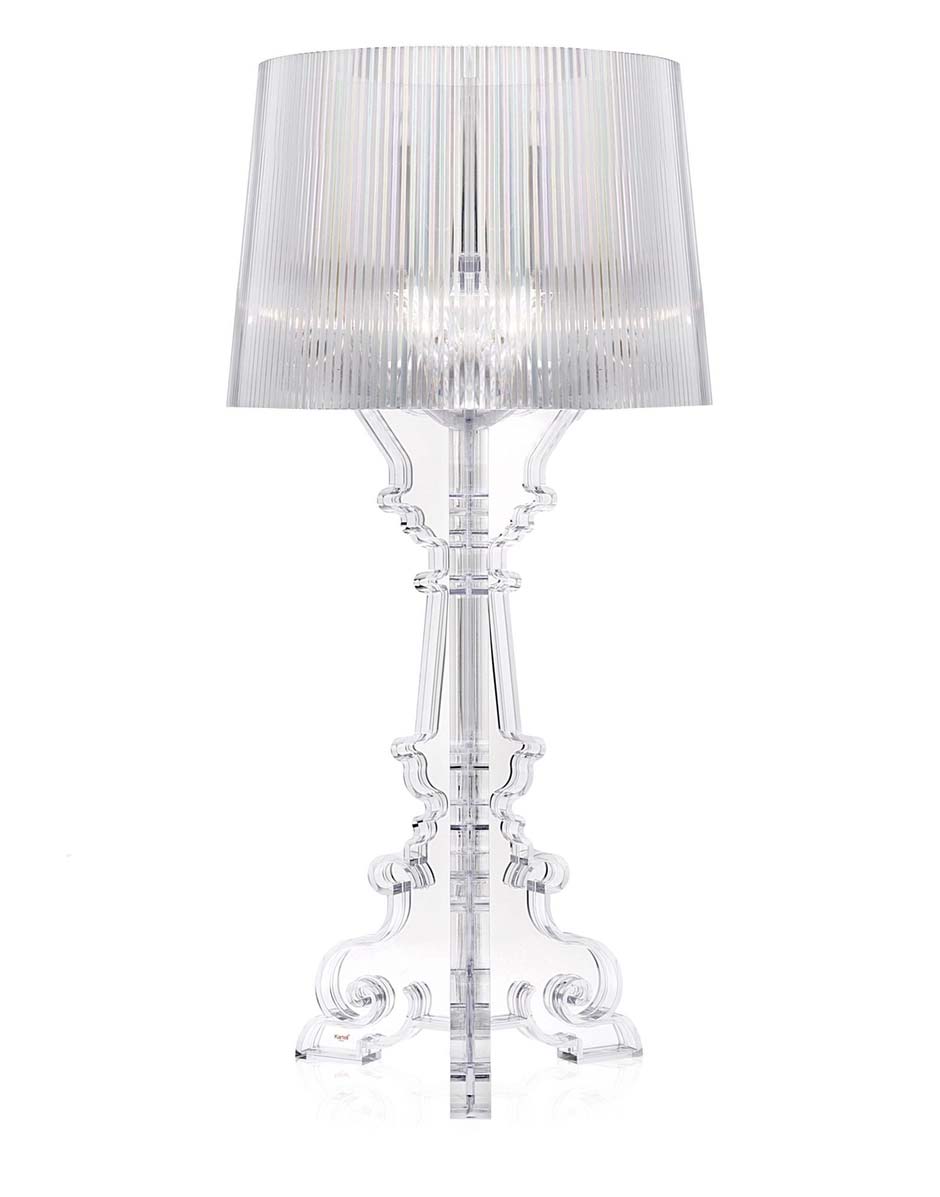
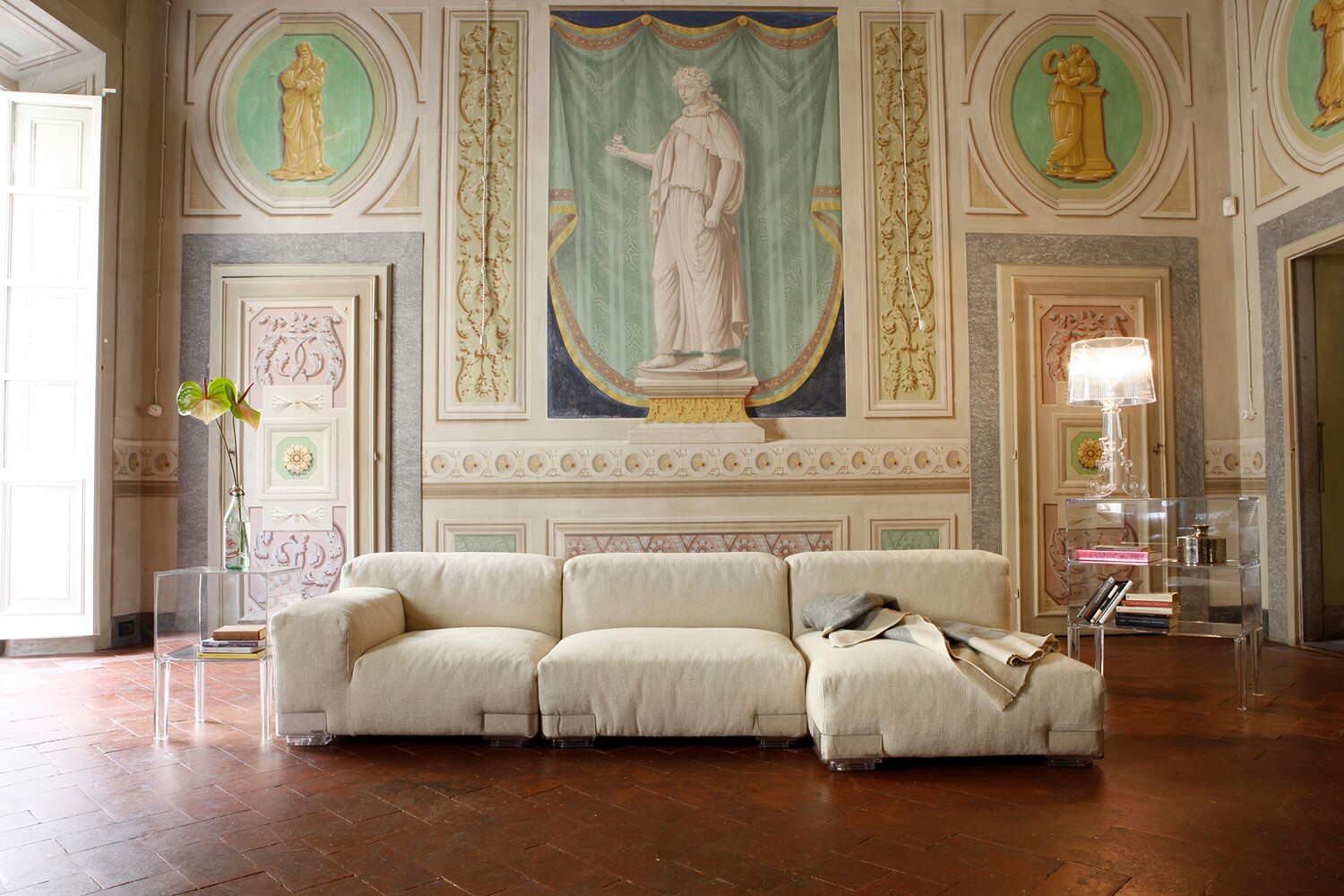
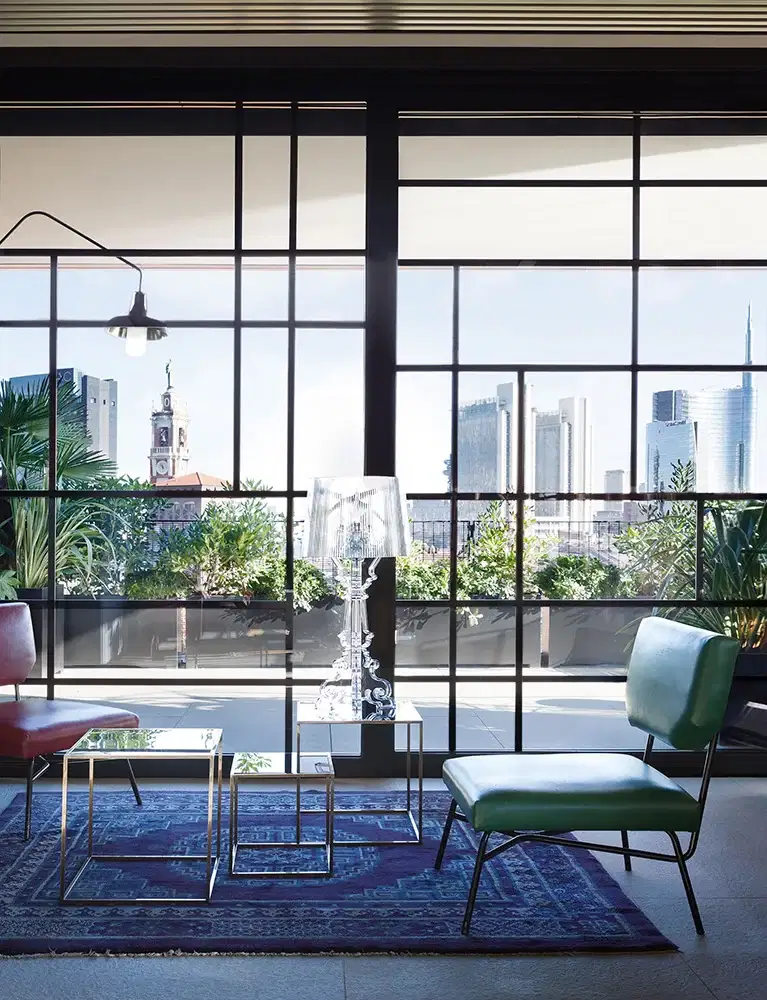
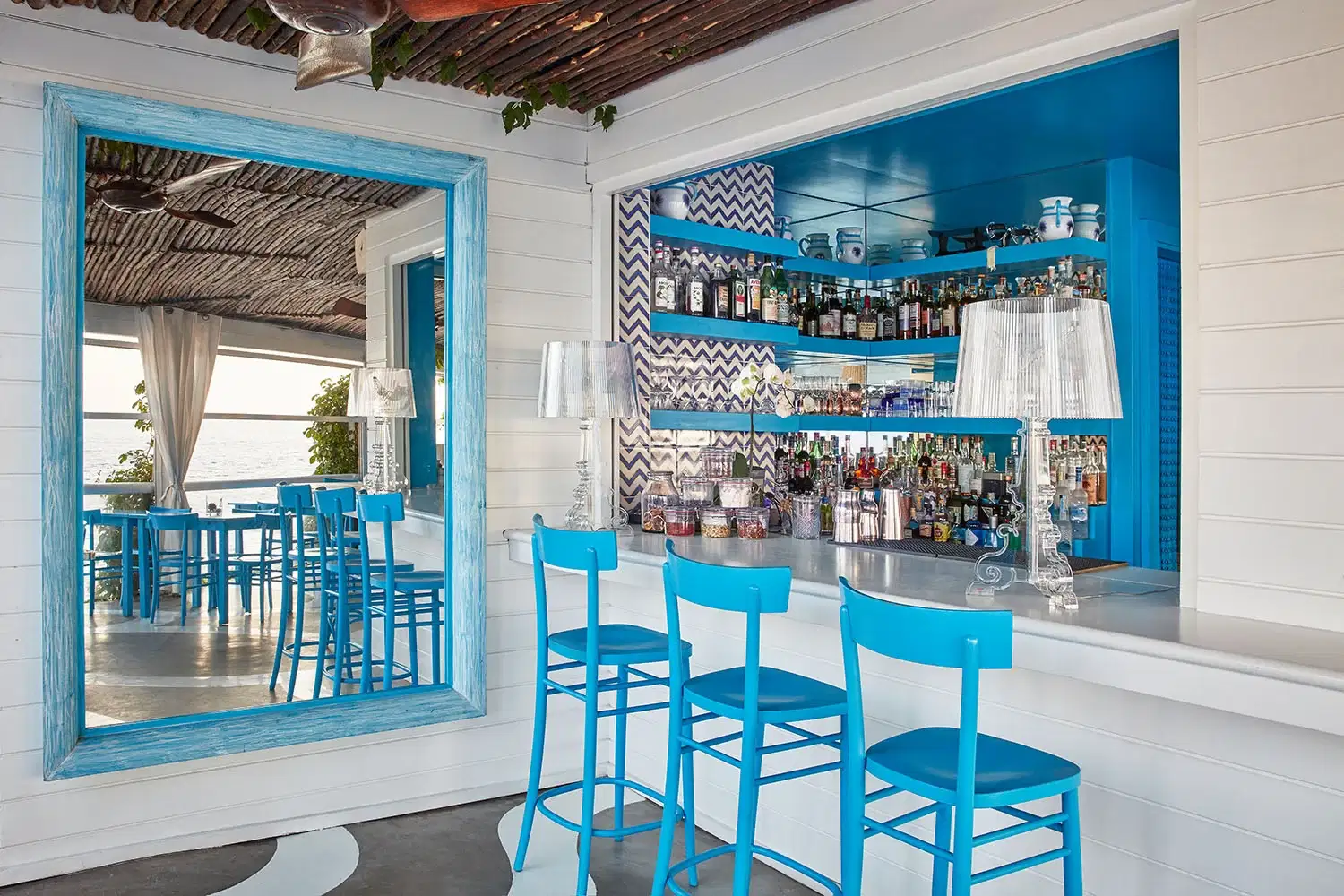
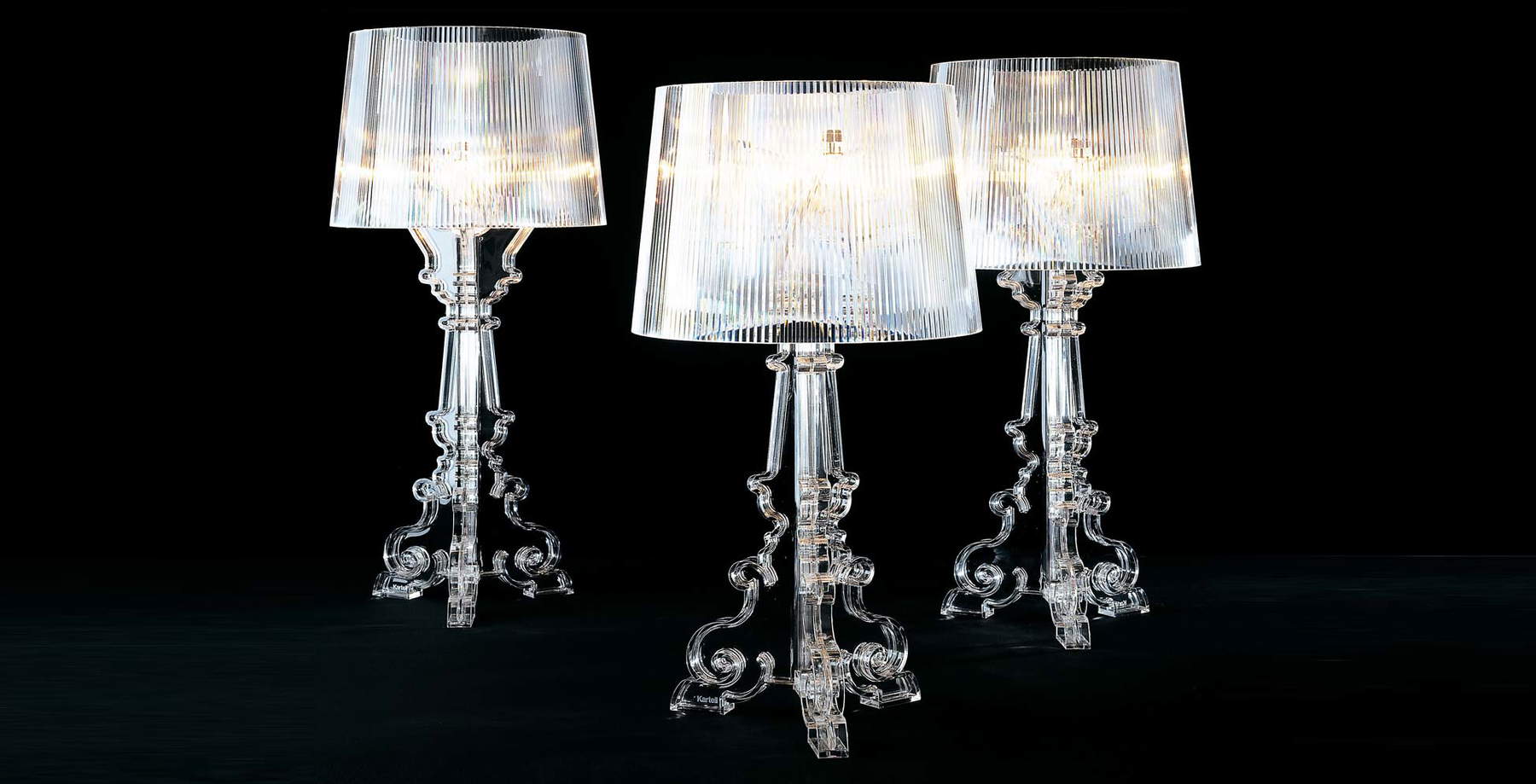
It is in fact a lamp that weighs a mere 3.4 kilograms, compared to a height reaches a maximum of 78 centimeters. It is an object that is immediately recognizable because of theapparent contrast between the support and the shade: the base, consisting of three two-dimensional planes that cross each other, is indeed reminiscent of the elaborate tripod bases of Baroque candlesticks, while the large shade has less sinuous lines, being made with a pleated effect to make sure that the refraction of light manages to create suggestive effects of reflections in the room that is illuminated by Bourgie. And it is precisely the hat, the only adjustable element of the lamp (thanks in fact to a special coupling system), that allows it to reach three different heights (78, 73 and 68 centimeters).
Although the line is that of seventeenth-century furniture, actually the inspiration to Laviani came from ... an object that was very familiar to him: a lamp of his parents. The designer from Cremona explained the origins of the project in aninterview published in December 2020 in Mohd Design Magazine. “It was perhaps a product that was missing on the market,” Laviani explained. “It was 2003 and post-minimalism was dominating, we were working on something completely purged of any kind of decoration, also in reaction to the hyper decoration and color that had dominated the 1980s and early 1990s. So even on a cultural level it was a lamp that stood in a way that others have called ’neo-baroque.’ It was such a phase of my life. It was the first time that Kartell gave me a bigger budget to design a lamp, by the way it was the second year that Kartell had gone back to making lamps. As is always the case, one thinks of ten thousand things and then in the end I remade a lamp that my parents had on their desk thinking of making it in plastic. And the amazing thing, is that every so often I look back at the original drawings and that lamp went into production exactly as it was first designed.”
Bourgie also holds considerable historical importance, first attributed to it by design expert Alyn Griffiths in his important book 21st Century Lighting Design, where it is mentioned among the products that shaped taste in lighting in the new millennium. “In the early part of the 20th century,” Griffiths writes in the volume’s introduction, "design was dominated by the doctrines of modernism, and a philosophy of design by necessity became urgent because of the two destructive world wars. Gradually, in the second half of the century, reactionary movements eager to reintroduce decoration and humor into design began to emerge and gained their momentum. Italy played a crucial role in this strong creative awakening, thanks in part to the Italian government supporting design-industry collaborations as part of its plans to reinvigorate the country’s economy after World War II. Readymade products and lighting solutions created by influential designers such as the Castiglioni brothers in the 1960s, and the sculptural design of radical groups such as Studio Alchimia and Memphis in the 1970s and 1980s, inspired later generations of designers to challenge familiar forms and product types [...]. The Italian aptitude for creativity and ingenious solutions was a perfect combination to highlight the expressive qualities of light." The new millennium on the contrary sought to reduce the decorativism that had become widespread since the 1970s without, however, denying it but trying to mitigate its excesses, and among the solutions that would stand out was Bourgie since, the scholar explains, “it embodies a popular trend of the 21st century, that of combining historical visual references with contemporary materials.”
Originally produced with the idea of giving an unmistakable essay in the luster of transparent polycarbonate, " Bourgie’s playful form,“ writes Gryffiths again, who dedicates a tab to Laviani’s lamp in his book, ”evokes the intricate details of classic Baroque designs. The reflective properties of the plastic give the lamp the appearance of ground crystal, reinforcing the impression of inherent preciousness despite the fact that it is made of a relatively cheap and sturdy material. [...] The lamp’s iconoclastic design, which combines formal references from an earlier era with contemporary materials, allows it to sit comfortably alongside antiques and objects of different aesthetic styles, making it a popular choice for use in modern or eclectic interiors."
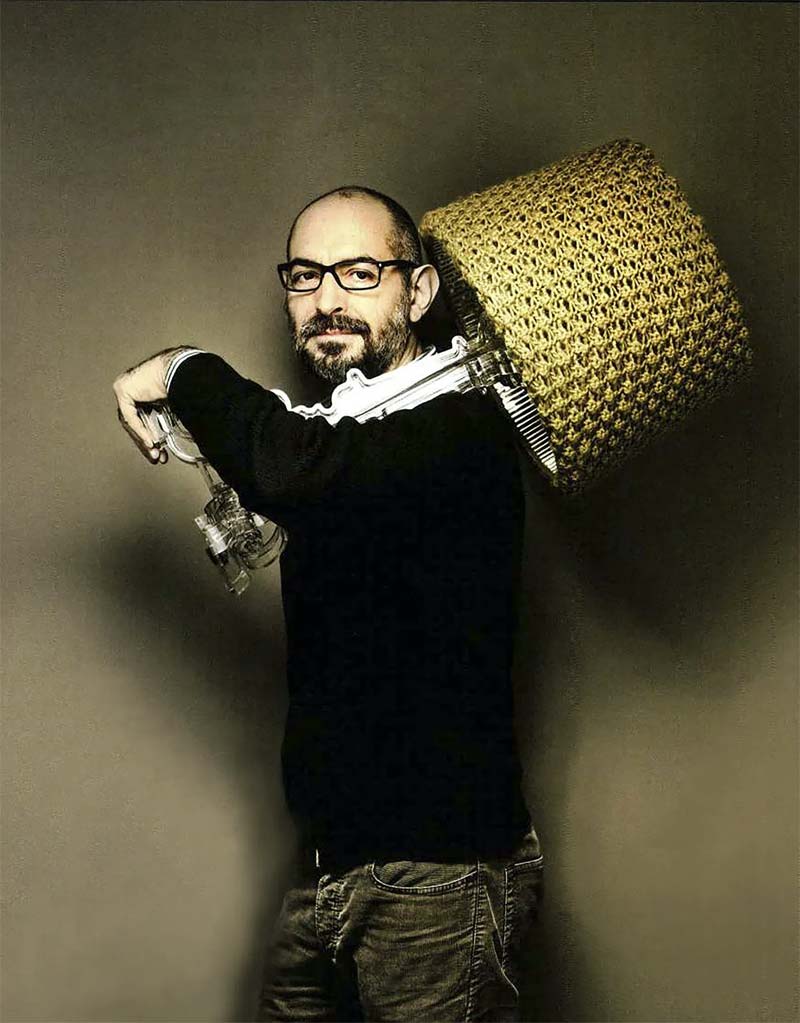
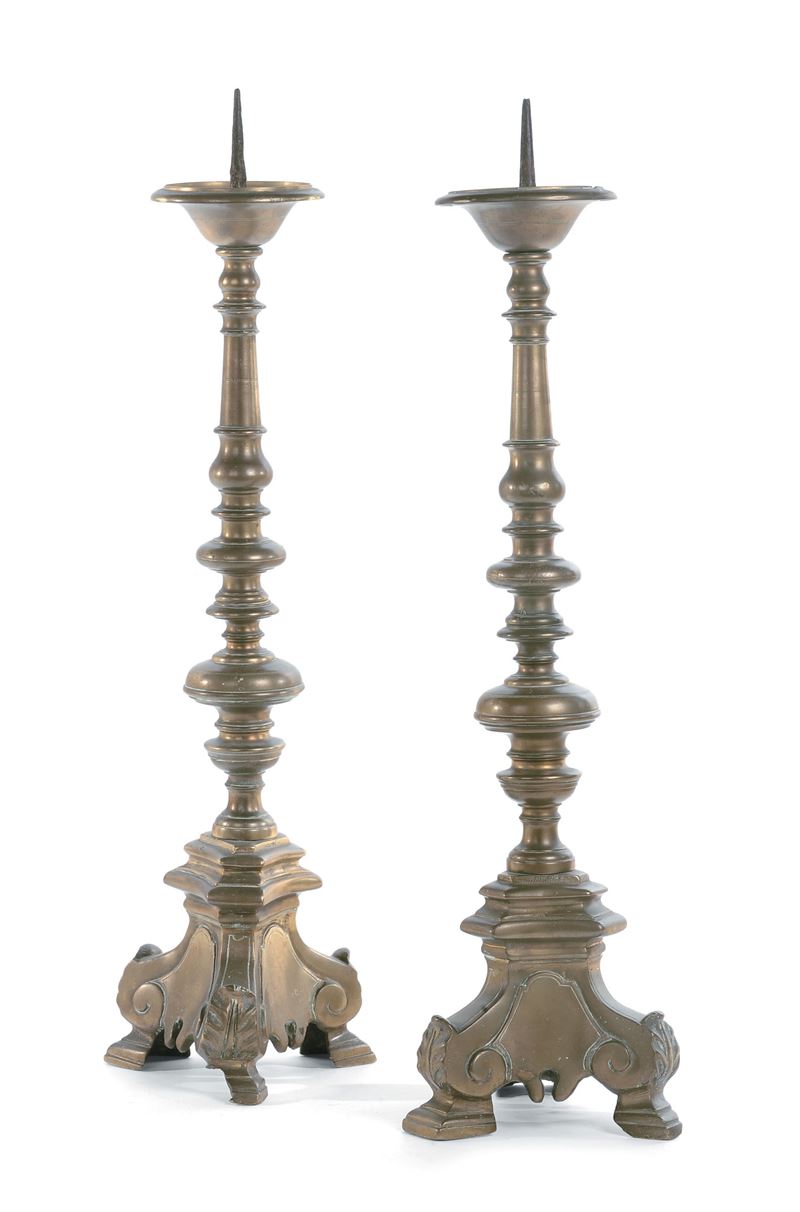
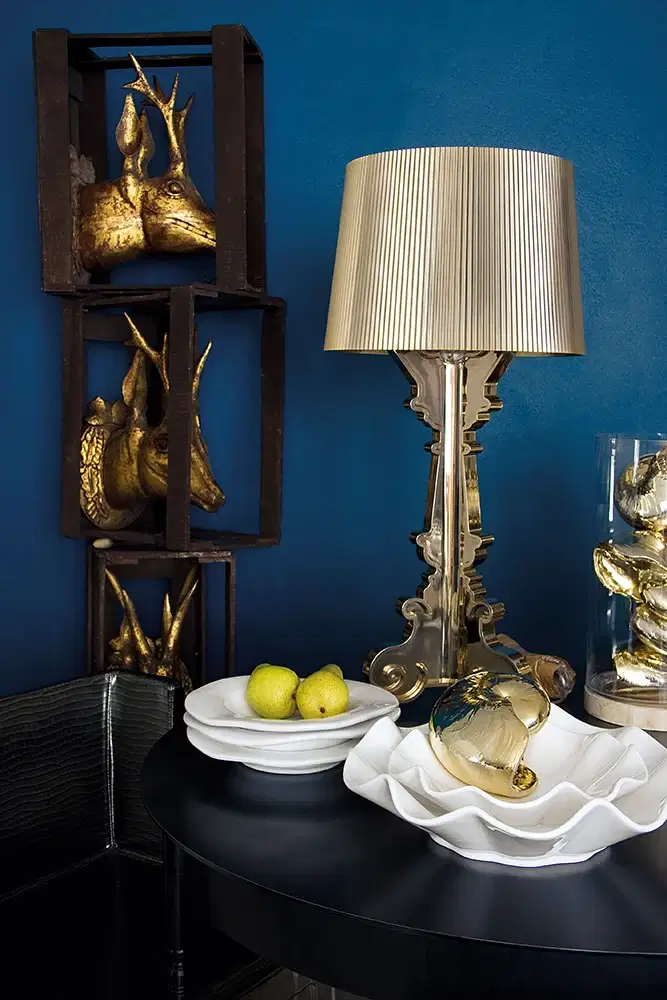
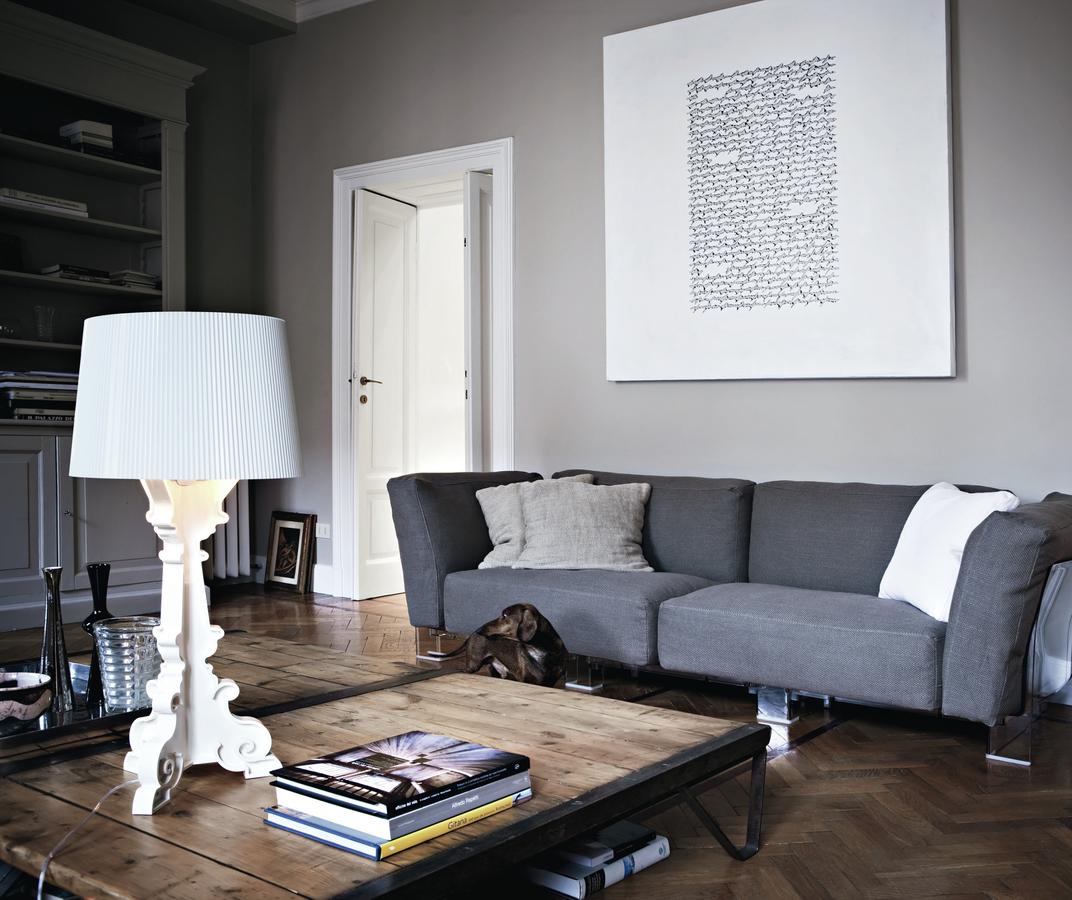
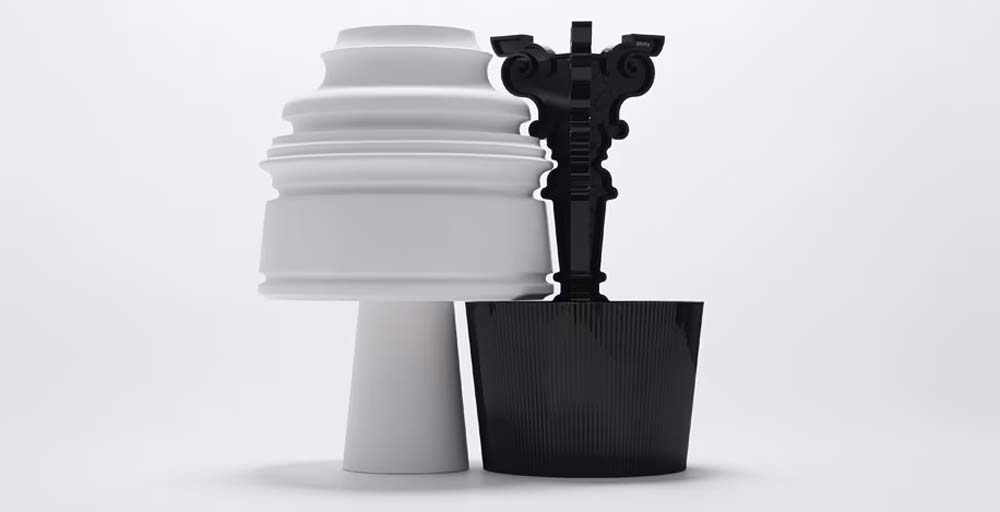
In just a few short years, Bourgie managed to carve out a role for itself as a true pop icon, thanks to its eye-catching shapes, adaptability, and ability to create a warm and welcoming atmosphere in any room. And on the occasion of its tenth birthday in 2014, Kartell asked nineteen designers to reinterpret the Milanese house’s most famous lamp. The result was ten singular pieces presented in 2014 first at Maison&Objet in Paris, then at the Flagship Store in Paris, then at the Kartell Museum in Milan, and finally at the Kartell store on Green Street in New York. Particularly popular was the lamp Eigruob (i.e., Bourgie read upside down) by Oki Sato (Toronto, 1977): a reinterpretation that also ended up in some design books as an example of the imagination that is capable of seeing shapes even in a vacuum. In fact, the lamp by the Japanese-Canadian designer is theexact complement of Bourgie and fills its empty spaces, with an elaborately shaped shade that fits perfectly into Bourgie’s beautiful base, and a rigidly shaped base that contrasts with the shade instead.
A very successful lamp, in essence. Perhaps when it came out, Laviani again explained, “no one was thinking of such a lamp, it was a transversal lamp because the fact that it was made of plastic made it on the one hand ironic and therefore liked by younger people but on the other hand comfortable from a design point of view, compared to other lamps of the time that were extremely minimal or futuristic. The first year, I think seventy thousand lamps were sold, and two molds were produced because we couldn’t make it with one.” A production that to this day has certainly not stopped: Bourgie is still one of Kartell’s flagship products and one of the most appreciated lamps of 21st century design.
Warning: the translation into English of the original Italian article was created using automatic tools. We undertake to review all articles, but we do not guarantee the total absence of inaccuracies in the translation due to the program. You can find the original by clicking on the ITA button. If you find any mistake,please contact us.





























